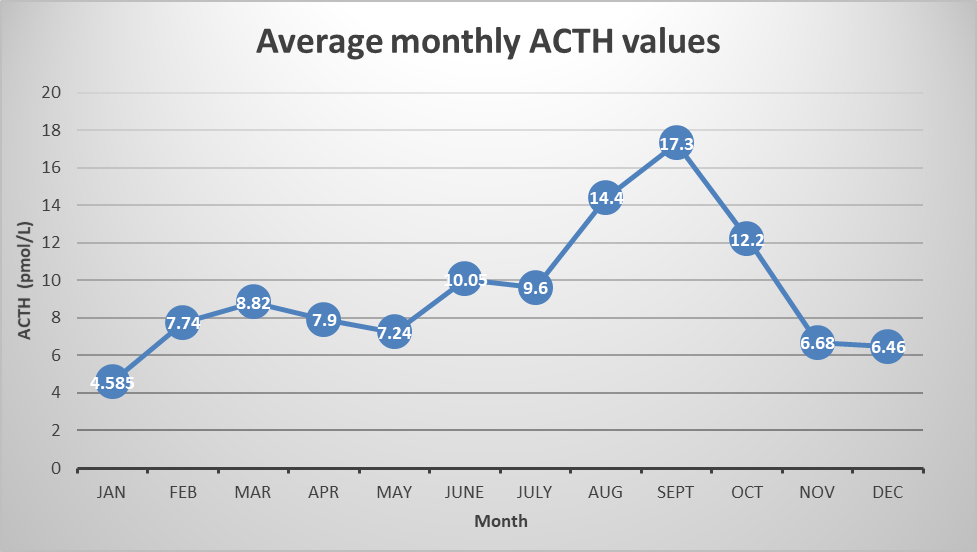OAHN Equine Network Project: Investigation into the seasonal variations in ACTH levels in Ontario’s senior horses

Project Lead: Dr. Kristiina Ruotsalo
Collaborators: Dr. Alison Moore
To view the full report, please download the PDF here: https://www.oahn.ca/wp-content/uploads/2023/05/PROJECT-SUMMARY-template-OAHN-equine-endogenous-ACTH-study-FINAL.pdf
PPID (pars intermedia pituitary dysfunction), is an endocrine disorder that occurs in over 20% of aged horses, ponies and donkeys. Clinical signs and measurement of endogenous ACTH (eACTH) concentrations currently form the basis of diagnosis. In addition to illness, pain, or stress resulting in increases in eACTH, and possibly confounding clinical interpretation, the equine pituitary gland exhibits a circannual (seasonal) rhythm in the release of eACTH. This circannual increase occurs both in clinically healthy horses and those affected with PPID, although the increase in affected horses is typically of greater magnitude.
In order to characterize the onset, duration, and magnitude of the circannual increase in eACTH concentrations, a group of clinically healthy, senior, Ontario horses of various breeds and both sexes, was recruited for monthly eACTH sampling. Horses were considered healthy based on physical examination, health status questionnaire, and unremarkable study intake CBC and biochemistry profile results.
Twenty- three horses, ranging in age from 16 to 23 years entered the study. Seven horses completed all 12 months of consecutive sampling. Remaining horses were sampled 5 to 11 times.
As per the figure below, average eACTH concentrations approached 10 pmol/L in June and July, reached a peak value of 17.3 pmol/L in September, remained mildly increased in October, and then resumed concentrations of <10 pmol/L. Thus the circannual increase in eACTH concentration may be noted in late June, and remain present until late October. A large degree of individual variation with respect to the magnitude of increase was present.

Future investigations will include sampling a larger cohort of clinically well, senior horses from June to October in order to establish a statistically significant reference interval for eACTH.

